Pruning blueberry bushes: expert advice to keep plants healthy and productive
For the best results when pruning blueberry bushes stick with our easy step-by-step guide and you'll soon see a bumper crop
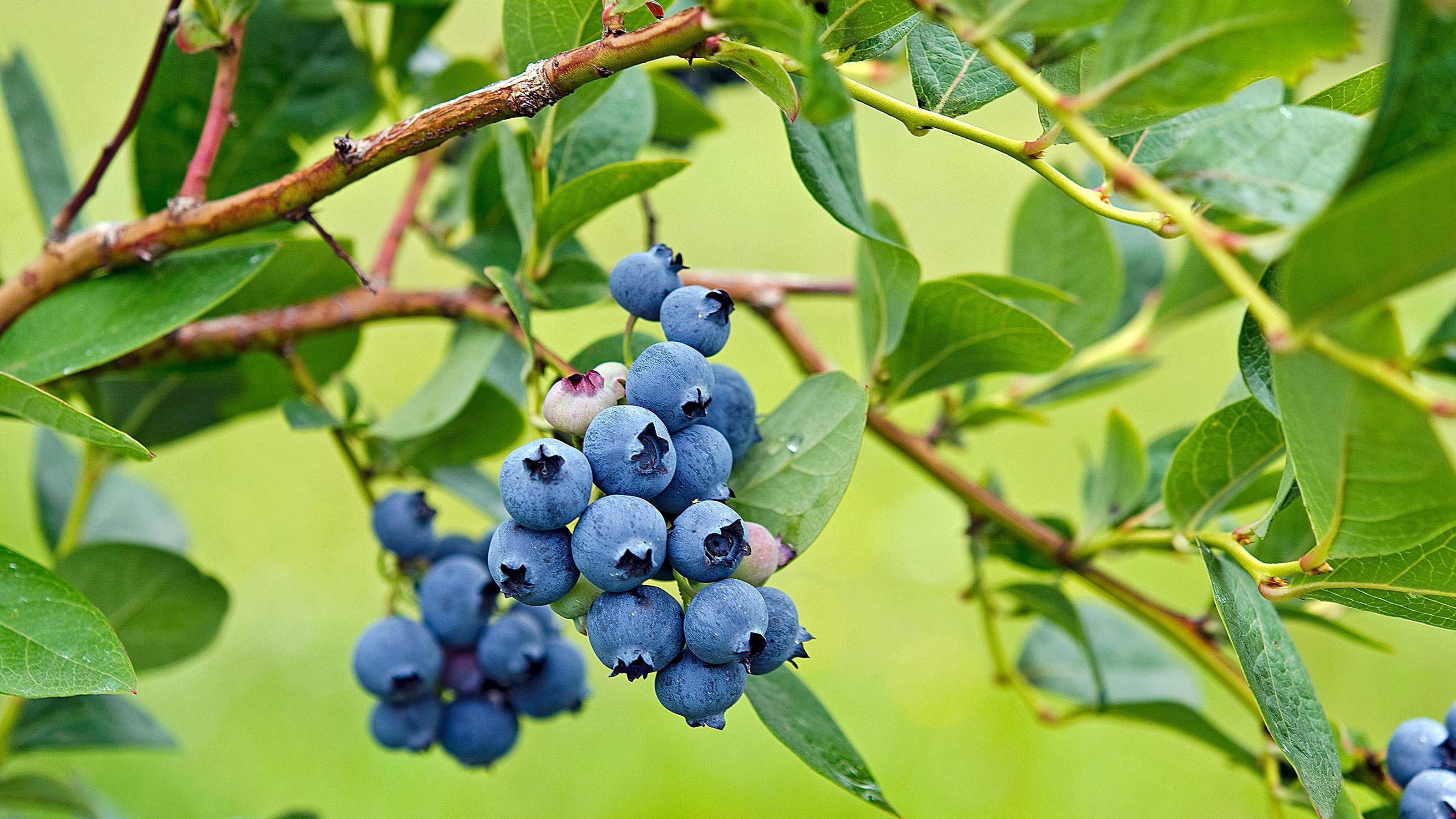

The good news is that pruning blueberry bushes is really straightforward, especially with our super-easy guide. With regular pruning your blueberry bushes will carry on producing delicious fruit every summer for years to come, as well as keeping them healthy and looking good.
Hold fire if your blueberry bushes are new though as generally they don't need pruning for the first couple of years. They are very hardy plants which means you can go in confidently with your pruning shears. You'll soon get the hang of it and after pruning correctly you'll be rewarded with bigger and better blueberries.
When growing blueberries following the correct pruning routine will create a constant process of rejuvenation for the healthiest blueberry bush and a bumper crop of fruit.
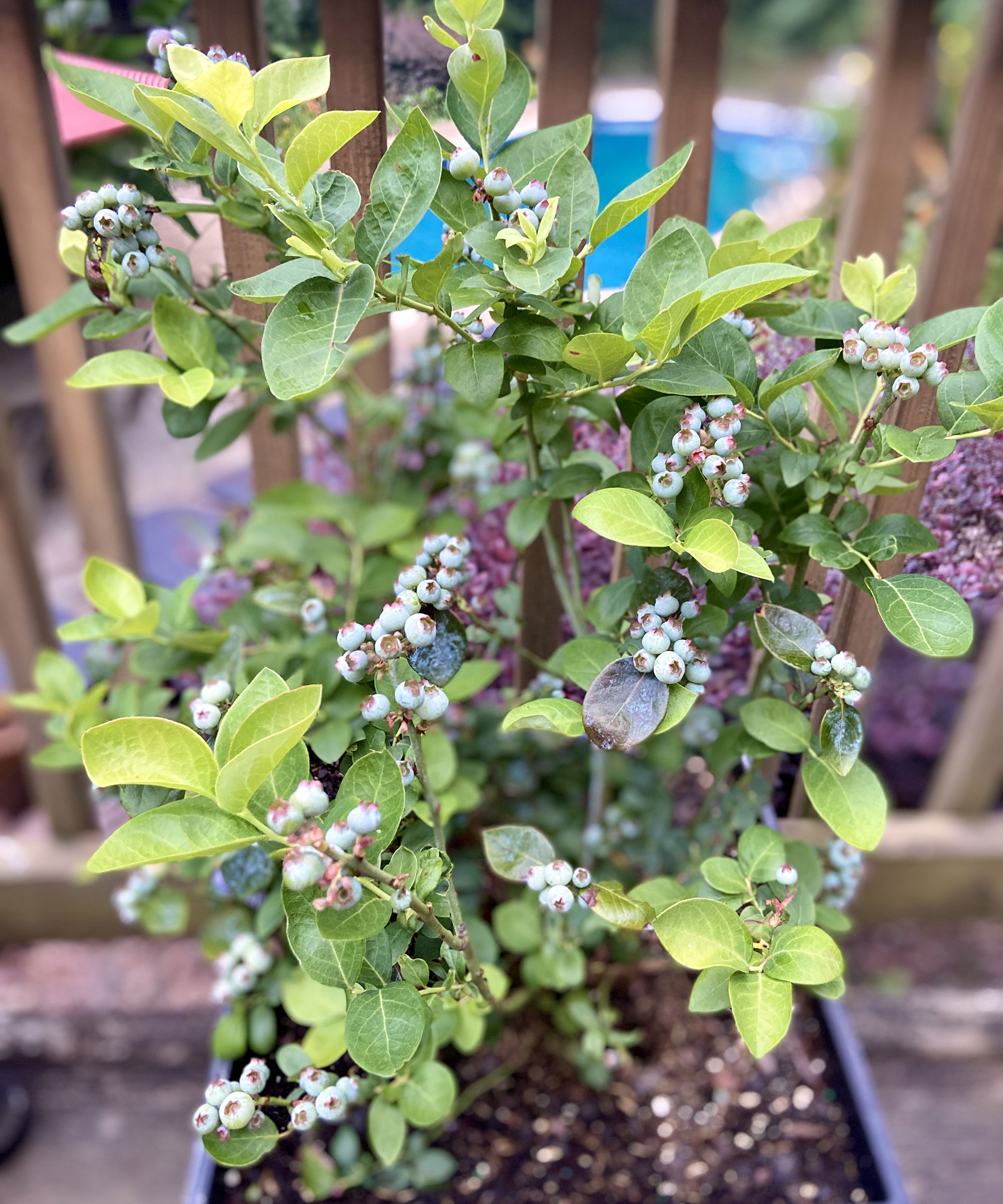
The fruit on this potted blueberry plant isn't ripe yet. The berries are white and green before turning dark blue
Get it right with our step-by-step guide to pruning blueberry bushes
So where do you start? ‘The idea is to make sure your blueberry bush always has a good selection of young healthy looking red stems and plenty of fat fruiting buds,’ says Thompson & Morgan’s horticultural expert Sue Sanderson.
There's one key thing to remember if you want to get the best results when pruning blueberry bushes, according to Sue. ‘The two year old wood is most productive so you need to cut back the very oldest stems every year to encourage new stems to be produced from the base of the plant.' If that sounds a bit technical don't worry as we'll cover how to do this.
So whether you're thinking of adding a blueberry to your growing collection of the best fruit trees or you already have one, here's everything you need to know about pruning them for the best possible results.
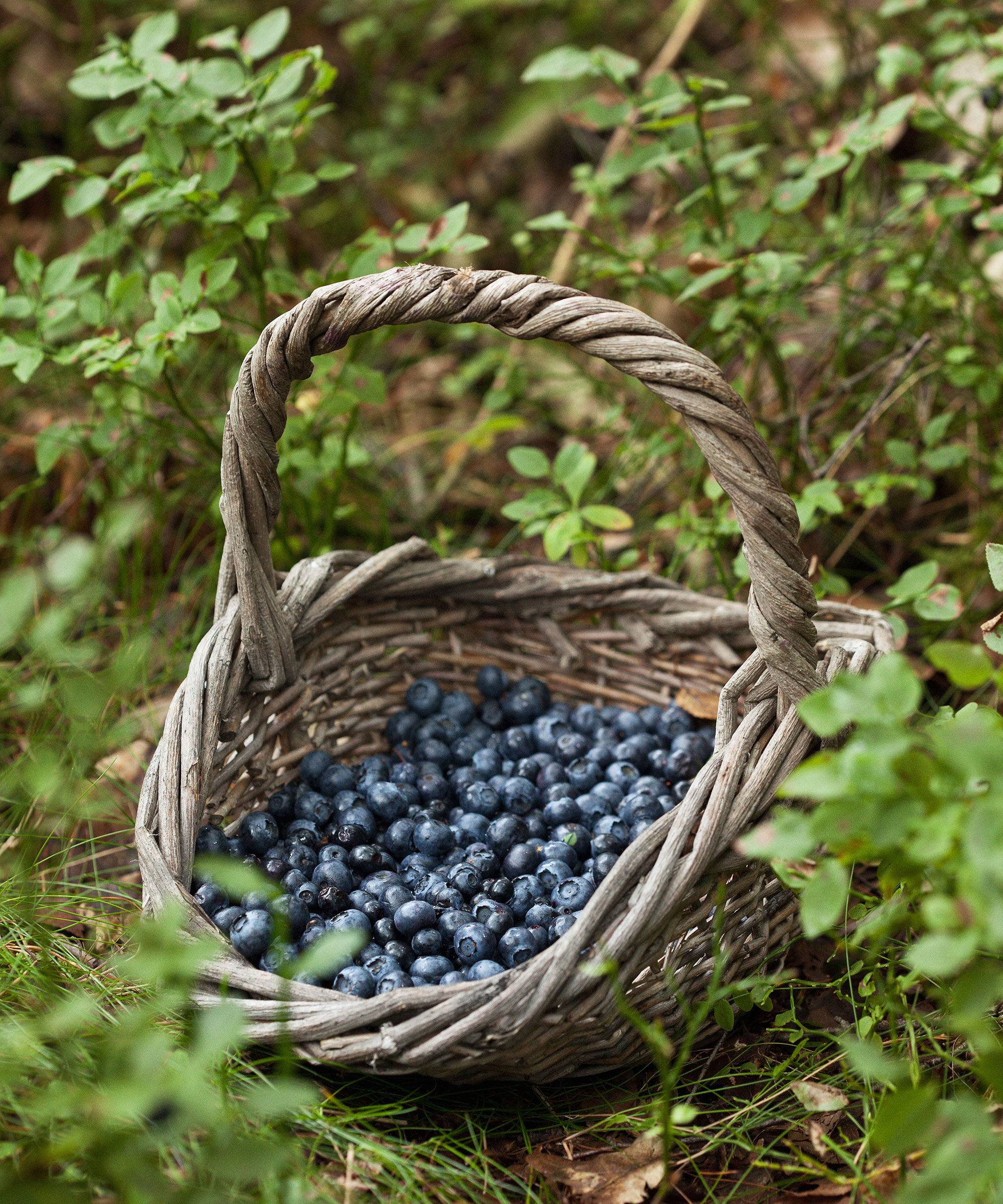
Prune blueberry bushes in the right way and you will soon be rewarded with a bumper crop
1. Take an overview on what needs to be trimmed
Just as you would when pruning apple trees or pruning grape vines, first take a good look at your blueberry bush and decide what needs to stay and what needs to go.
Once blueberry bushes are established you need to remove any weak, dead and damaged stems that could be spoiling the look of your plant as well as hindering the production of berries.
'While you’re pruning you should always aim to trim out any dead or damaged stems to help create a healthy open framework,' says Sue Sanderson. 'Blueberries tend to send out some low horizontal stems close to the ground and these can be pruned out too.'
Also, you will need to trim any twiggy stems at the end of branches that fruited the previous year.
'The best tools for the job are sharp, clean pruning shears (or secateurs as they are known in the UK) that should be resharpened and disinfected after use to prevent the spread of diseases,' says Amateur Gardening magazine's Ruth Hayes.
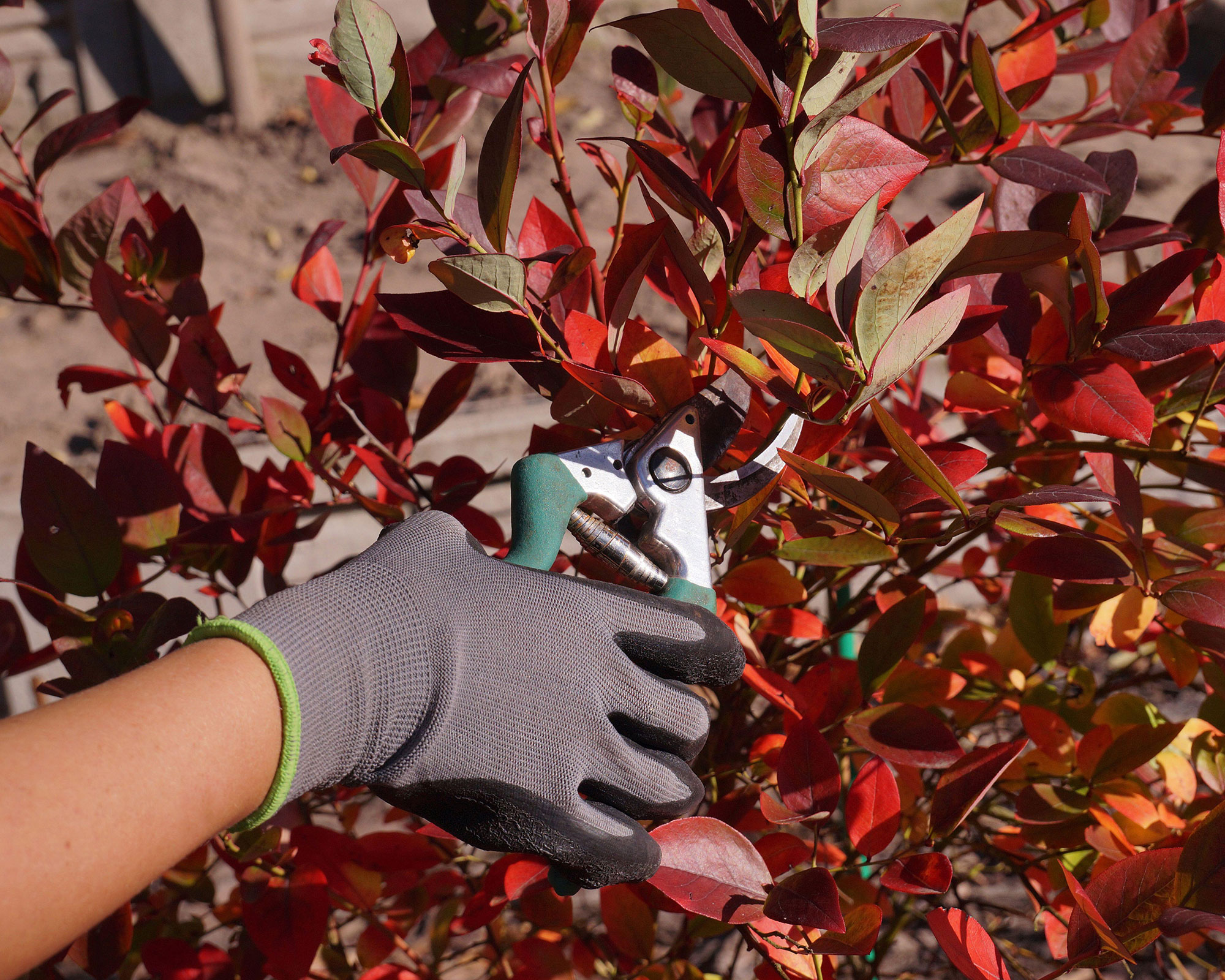
Select the right stems when pruning blueberry bushes
2. Open up the center of the blueberry bush
Once you've removed any stems that obviously need to go take a closer look at what's left.
'The center of the bush needs to be open to allow air flow. This will ensure good health and allow ripening of fruit,' says horticultural expert Kate Watkinson from Burpee Europe. It's a similar approach when pruning blackcurrant bushes too. 'Make sure cuts on your blueberry bushes are made with clean sharp secateurs above an outward facing bud,' adds Kate.
Pruning in this way will help create an upright bush and keep the fruit away from ground level, adds Kate. 'There are fat buds that produce fruit and flat ones that produce leaves. In the first two years it's important to concentrate on growing and good root development, not fruit production, therefore removing the fat fruit buds, or the flowers if you miss the buds.'
3. Trim old wood (but not all of it)
After that, turn your attention to the oldest wood, removing a quarter of it from the base of the plant to make room for new stems. Alternatively, reduce these old stems to a strong shoot lower down the wood.
Remove one or two of the older stems completely every year. This will encourage the blueberry bush to develop new shoots from the base, which will be more vigorous and productive.
'If you find that there hasn’t been much fruit production on a particular stem, prune it out and allow a new younger stem to take its place,' says Kate Watkinson.
4. Feed your blueberry bush after pruning
Treating blueberry bushes to a feed after they've been trimmed is a good idea. Spring is the best time of year to fertilize plants such as blueberry bushes, whether you're growing fruit in pots or in the ground.
'We grow our blueberries in containers of ericaceous compost because we have very chalky soil that doesn’t suit blueberries at all,' says Ruth Hayes. 'Whether yours are grown in the ground or in planters, don’t forget about mulching with well-rotted compost or manure after pruning.'
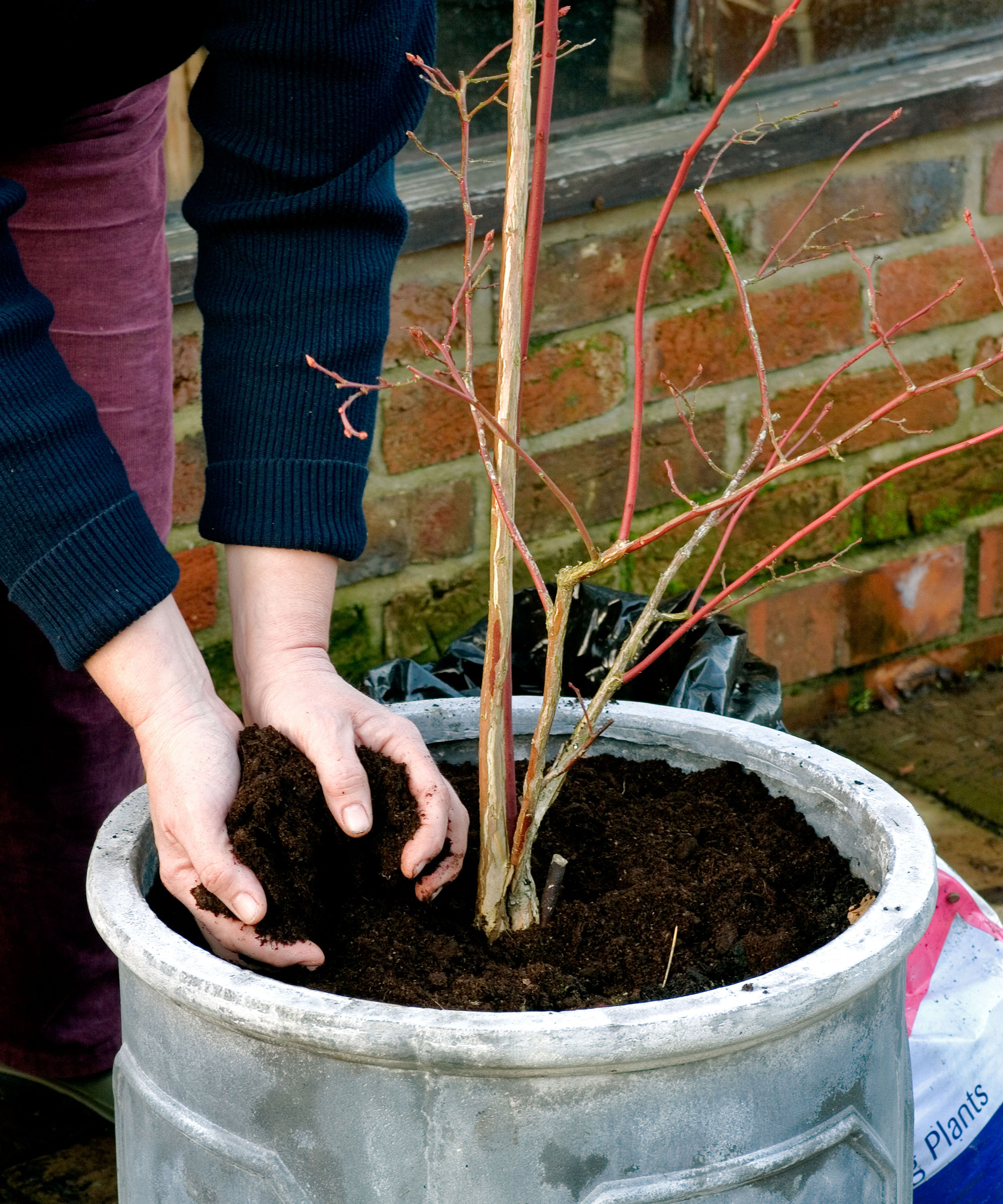
For the best results mulch blueberry bushes with nutrient-rich compost after pruning them
When is the best time to prune blueberry bushes?
In order to make sure your blueberry bush stays productive the best time to prune it is in early spring. It's ideal as the plant is still dormant and hasn't yet budded. So remember to include pruning blueberry bushes in your round-up of spring garden jobs.
If you prune in early spring when the plants are starting to green up again you will be able to tell the difference between the new fat buds that produce flowers and fruits, and the smaller, flatter leaf buds.
'Like most deciduous fruit bushes, blueberries are pruned during the dormant months, although they shouldn’t need any major work for the first couple of years while they grow and get established,' says Ruth Hayes. 'All you need to do during this period is remove any branches that are crossing or rubbing on other wood.'
If you'd prefer to make pruning blueberry bushes one of your winter garden jobs instead, it's worth pointing out that you can actually get going on this task from late fall onwards, as the bush is also dormant in winter.
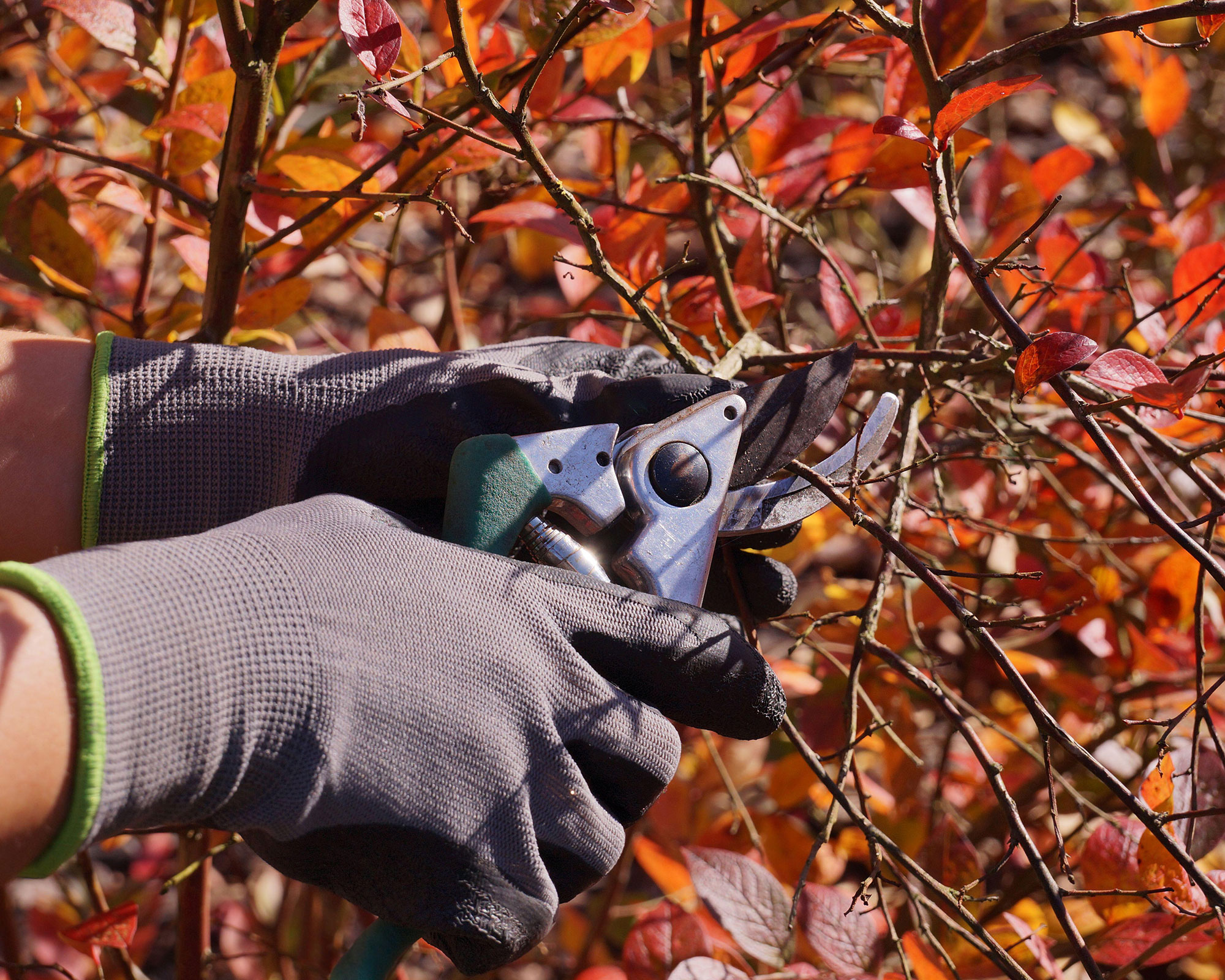
Early spring is the best time for pruning blueberry bushes but you can do it from late fall right through to early spring
Do blueberry bushes fruit on new or old wood?
Blueberries fruit on wood that is one year old. Since blueberries grow flowers on one-year-old wood, each year’s blueberry crop grows from buds on wood from the previous season. Pruning of established blueberry bushes consists of taking out a proportion of the older wood to help keep plants productive.
If you don't prune blueberry bushes in the correct way they will grow thicker crowns and buds will appear further down the plant. Branches become thin and twiggy, and canes cross each other to find light and air. As a result the fruit crop becomes poorer.
A proper pruning process helps blueberry bushes last for years and will ensure they remain a key crop in your kitchen garden.
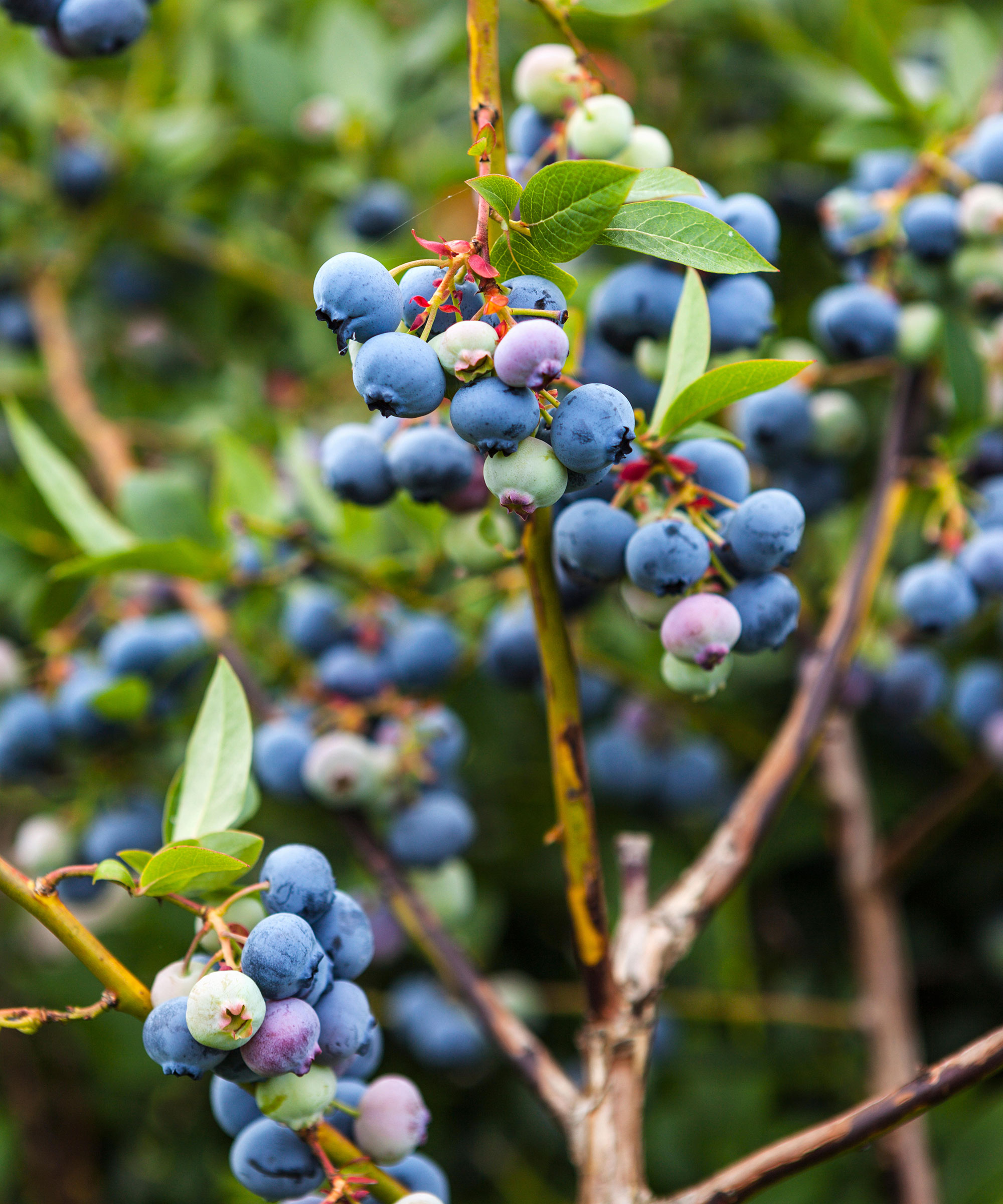
Make a blueberry bush the centerpiece of grow your own projects
Can you cut blueberry bushes right back?
You shouldn’t cut blueberry bushes right back, according to Kate Watkinson. It shouldn't be necessary anyway if you are pruning blueberry bushes in the right way. 'They should be maintained properly to keep them in good health, shape and to allow maximum fruit production.'
Blueberry bushes are very resilient but even so don't overdo it. 'You just need to make sure you’re only cutting back unhealthy, dead, or damaged sections of the plant,' says Myjobquote.co.uk gardening expert Fiona Jenkins. 'If you remove these parts, your blueberry bush will grow very healthy and strong.'
Compact blueberry bushes are great for small gardens too.
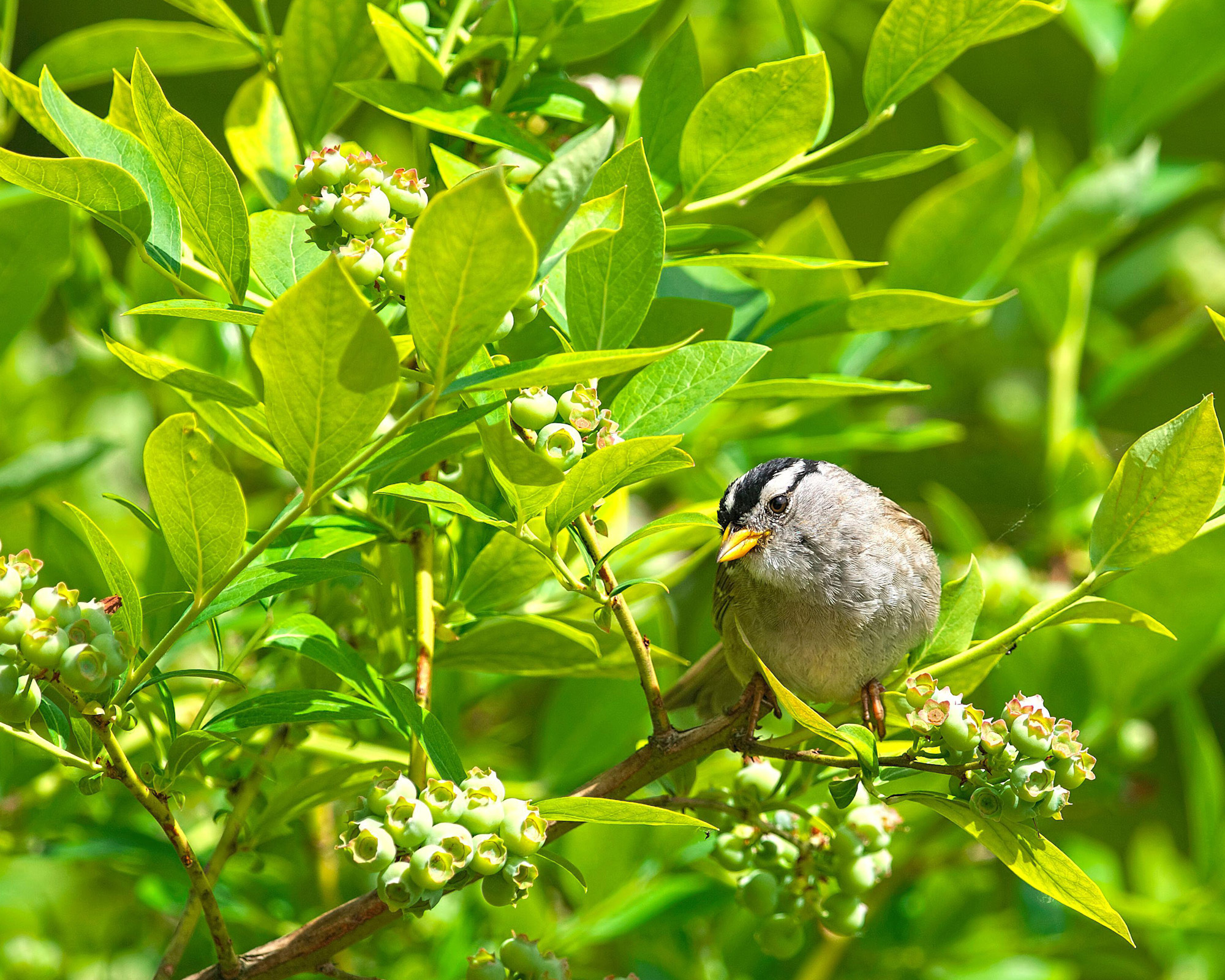
Birds love snacking on blueberries

Lifestyle journalist Sarah Wilson has been writing about gardens since 2015. She's written for Gardeningetc.com, Livingetc, Homes & Gardens, Easy Gardens and Modern Gardens magazines. Having studied introductory garden and landscape design, she is currently putting the skills learned to good use in her own space where the dream is establishing a cutting garden.
